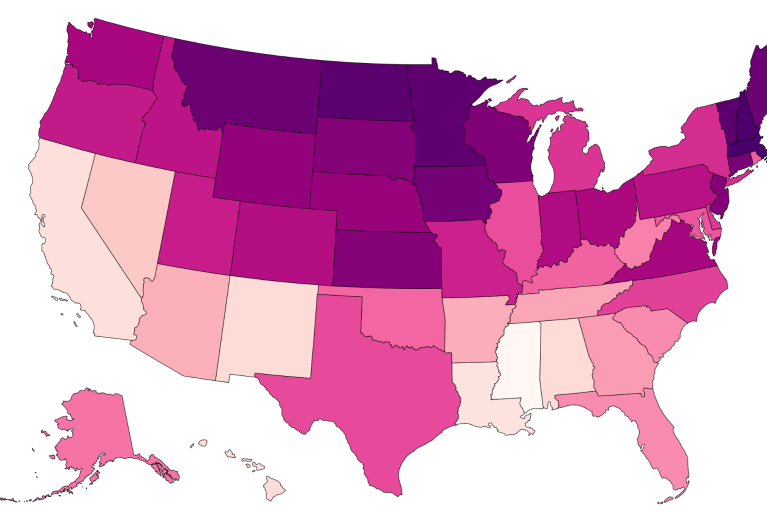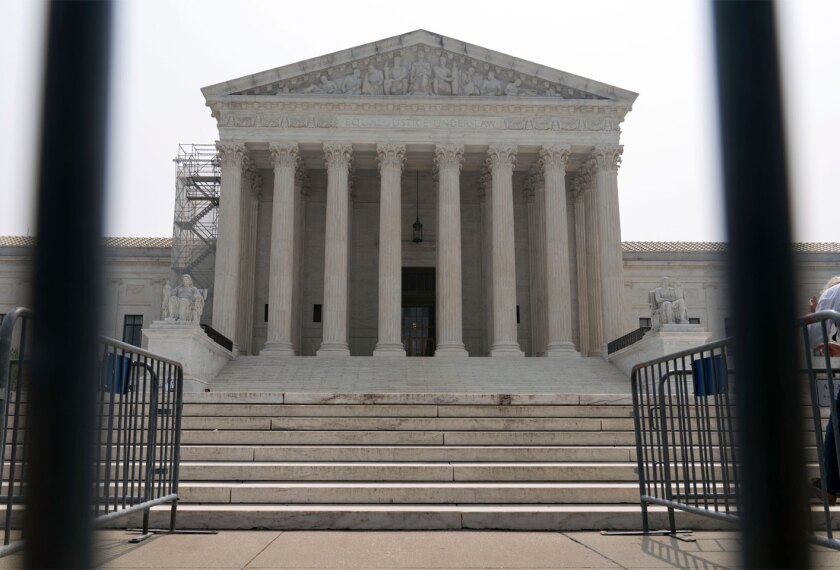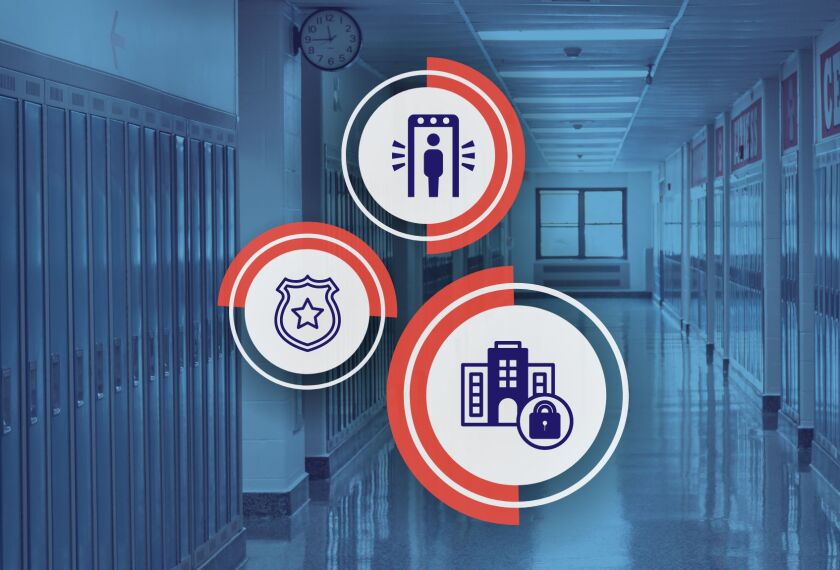A statewide ban on suspensions for some of the youngest learners in Maryland successfully reduced the use of the practice—but didn’t address how exclusionary discipline affects students of color or students with disabilities, researchers concluded in a recent study.
The research—requested by the Maryland State Department of Education and conducted by researchers from Brown University, the University of Maryland, Baltimore County, and Texas A&M University—stems from a 2017 law that banned out-of-school suspension in pre-kindergarten through 2nd grade in Maryland public schools, unless the student posed a threat to others and was evaluated by a school psychologist or counselor.
National advocates have argued that suspension isn’t an effective tool to deal with misbehavior, and that early punitive discipline can have negative impacts on students’ school experiences, graduation rates, and the likelihood they will end up in the criminal justice system. Past research also shows that students of color and students with disabilities are more likely to be disciplined or arrested at school.
Democrats have long championed attempts to disrupt the use of exclusionary discipline practices—such as detention, suspension, or expulsion—while Republicans have criticized it as being soft on disruptive behavior.
But pre-pandemic goals to use restorative justice models—which rely on holding students accountable without punitive measures—have come into conflict with increased student behavior problems and struggles with classroom management. Teachers are often reluctant to let go of a tool like suspension, experts say.
At least 15 states and the District of Columbia had restrictions for using exclusionary discipline in schools as of 2021, according to the working paper, which was published last month by the Annenberg Institute at Brown University. A majority of the states, at least 37, emphasized the use of nonpunitive alternatives, the report states.
By the year Maryland rolled out its ban on suspensions for students in grades PreK-2, at least 23 of the nation’s 100 largest districts had policies aiming to reduce suspensions, according to the research.
Most total bans—bans that outright try to halt the use of suspension with limited exceptions—have been at the district level; Maryland is somewhat unique in having a statewide total ban, said Catherine Mata, a postdoctoral research assistant at Brown University, who co-authored the research.
Legislation in Maryland resulted in a drop in suspensions after ban took effect
Even with an outright ban in Maryland, minus a few limited exceptions, suspensions did not drop to zero. The research suggests that schools likely continued to use suspension to address nonviolent behavior, in conflict with the law.
Even so, the legislation resulted in a substantive reduction in out-of-school suspensions for the targeted grades, dropping 58 percent from the pre-ban school year to the first year with the ban implemented. Since pre-K is not universal in Maryland, researchers looked at the impact beginning in kindergarten.
Roughly 3,318 students in grades K-2 had been suspended during the 2016-17 school year, a figure that had been trending upward. The number of suspensions dropped to 1,409 in 2017-18, the first school year with the law on the books.
The researchers also looked to see if the ban would have reverberations school-wide, even for grade levels not included in the legislation. They found that there was no significant impact of the ban on other grade levels. In 3rd grade in the 2018-19 school year, the number and duration of suspensions were lower than expected, but researchers concluded that, nonetheless, 3rd graders were no less likely to be suspended.
Because of remote learning during the pandemic, researchers can’t see the long-term effects of the ban, said Kalena E. Cortes, a professor at Texas A&M University and a co-author of the report.
There was no evidence that educators reported infractions as being more violent than they were so educators could suspend students anyway, Mata said.
In other states with bans, educators have used loopholes to say a suspension was for a different reason, said Jane Lincove, professor of public policy at University of Maryland, Baltimore County, and a co-author of the research.
When the researchers compared Maryland to other states, they found that Maryland did a better job at preventing suspensions from happening to the extent they had been.
“We thought it was disappointing, and the state thought it was disappointing, that there were still students that were getting suspended at all, period—like they thought it would just never happen again,” Lincove said. “It still happens a little bit, but it’s not a shift of everybody who used to get suspended is now in-school suspended.”
Disproportionality is still a factor, despite the ban
K-2 students of color still faced the exclusionary discipline practice at disproportionate rates, and disproportionality increased for students with disabilities. The report called the ban a “blunt policy instrument” that doesn’t target specific demographics for extra support or treatment.
Maryland state Sen. Will Smith, a Democrat, who sponsored the ban legislation, said his cursory review of the research did show positive outcomes for reducing the use of suspensions, but also showed gaps.
“We have a lot of work to do in Maryland to address the disparities,” he said.
The research could inform policy decisions moving forward, he said. And while he said he’d like to see the ban expanded to include more grade levels, “it gets more controversial as the age progresses,” he said.
And outside of the halls of the legislature, teachers are reluctant to give up any tool at their disposal, Mata said.
“What they express, at least to us, is a fear that other students would suffer in cases where they were actually disruptive, and the student could not be removed from school,” she said. “So they are still a little bit reluctant to let this tool go without having something else they can use in their classroom.”
Elsewhere, education leaders are still relying on suspensions to manage student misbehavior. In a letter to school leaders before the start of the 2024-25 school year, Louisiana State Superintendent of Education Cade Brumley directed school leaders to “recommit to assertive discipline action,” and emphasized two recent state laws that allow educators to remove “disruptive students” from classrooms and say that students in 6th to 12th grades could face immediate expulsion after three suspensions in the same year.
“Campus and classroom disruptions are hindering the teaching profession and student learning,” Brumley wrote on July 31. “As we approach a new school year, please recommit to assertive discipline action to create safe and orderly environments where teaching and learning can flourish. Students and teachers deserve peaceful schools.”
But opponents of punitive measures worry those tactics will ultimately do more harm than good. Education Trust, a research and advocacy organization that works on improving racial and economic equity in education, said it supports a suspension ban for grades pre-K to 5th because sending students out of the classroom deprives them of academic, social, and emotional opportunities.
Educators need more tools, and ongoing support, to not over-rely on suspension, EdTrust argued.
“Not all students have the support outside of schools that we know we can provide within schools,” said Nancy Duchesneau, a senior research manager for EdTrust. “At minimum, we should be making sure that schools are caring, inclusive spaces for children as they push limits and make mistakes and learn from their experiences.”
Disclaimer: The copyright of this article belongs to the original author. Reposting this article is solely for the purpose of information dissemination and does not constitute any investment advice. If there is any infringement, please contact us immediately. We will make corrections or deletions as necessary. Thank you.







